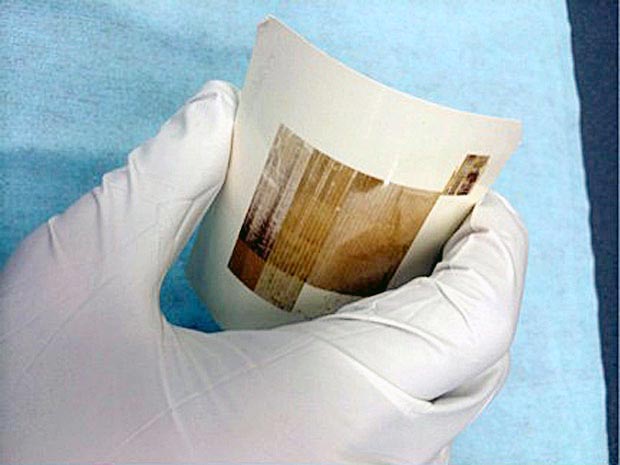Amy Norcross
EDN
Researchers at the Netherlands’ Delft University of Technology, in collaboration with scientists at the Japan Advanced Institute of Science and Technology, have developed a method that uses a laser and liquid silicon ink to produce silicon directly on a substrate. Their work was published in the American Institute of Physics’ Applied Physics Letters.
 |
| A high-mobility polysilicon layer was formed directly on paper by coating liquid silicon, which was annealed using pulsed laser light. Source: R. Ishihara, M. Trifunovic, TU Delft. |
In his IEEE Spectrum article on the development, author Charles Q. Choi points out that “the ability to print silicon onto substrates has existed for some time, but producing solid silicon from liquid polysilane ink required exposing the silicon to temperatures upwards of 350 degrees Celsius – far too hot for many of the flexible surfaces onto which one might want to print.”
The research team bypassed the annealing step altogether and transformed the liquid silicon directly into polysilicon.
“It was very simple,” says Ryoichi Ishihara, a professor at Delft University of Technology and one of the authors of the paper. “We coated liquid polysilane directly on paper by doctor-blading, or skimming it by a blade directly in an oxygen-free environment. Then we annealed the layer with an excimer laser [a type of ultraviolet laser that generates nanosecond pulses and is used in manufacturing smartphone displays], and it worked.”
The laser provided enough energy to transform the silicon ink into polycrystalline silicon that can form an electronic circuit, but the temperature remained below 150 degrees Celsius, leaving the paper completely intact.
Testing of thin-film transistors that used the laser-printed layer determined that the devices’ performance was similar to that of conventional polysilicon conductors and better than other ink materials. The researchers say this work could lead to low-cost, high-speed electronics that are flexible and biodegradable and can be used in wearable electronics, solar cells, RFID tags, Internet of Things sensors nodes, and even edible electronics.